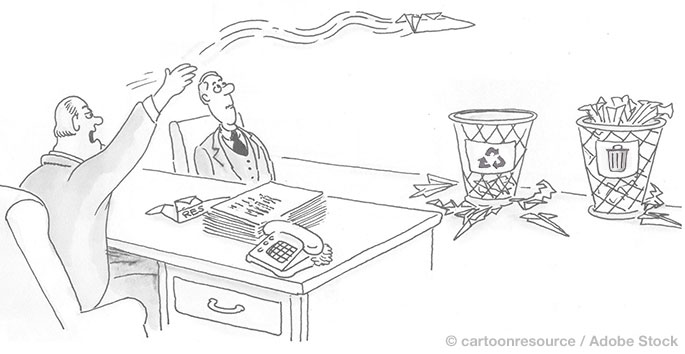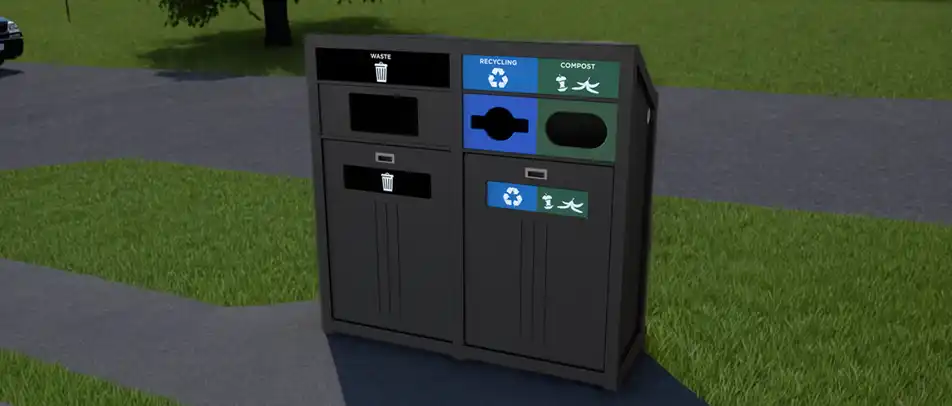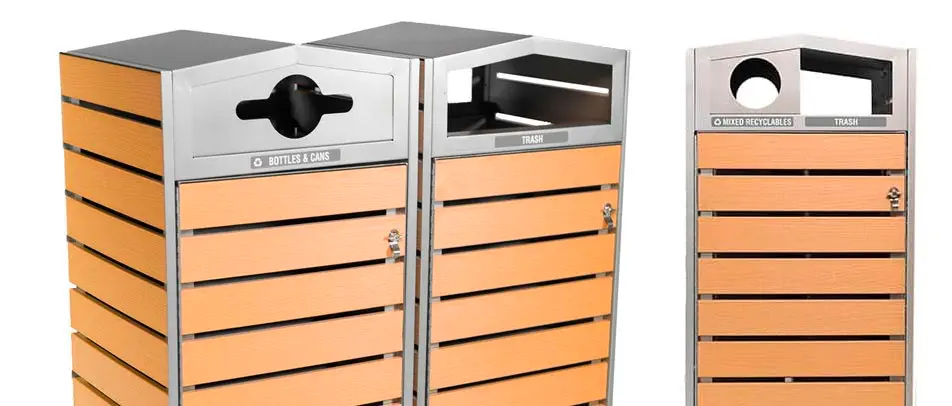
Good businesses don’t happen by accident. They make plans.
Effective businesses plan how many people they need to hire, their production, their supply chain, and their distribution chain.
Therefore, businesses must also devise a workplace waste management plan. Such plans can not only reduce the amount of waste discarded in landfills and greenhouse gases released into the atmosphere; they save your business money.
If waste is not yet a concern of your business, the future will change that. If nothing else, the government will use taxes to force recycling.
Therefore, all businesses should be proactive, and evaluate the waste they produce and how best to manage it in keeping with local laws, to best protect the environment and reduce business expenses.
A waste management business plan is the written record of your goals for managing waste and what you must do to achieve those goals.
Step One for Establishing Your Business Waste Management Plan
Before creating a waste management plan for your small business and how best to change, you must set a baseline. How much waste does your business create now? Just before collection day, go around to all the bins and record their size and how full they are. This will give you an estimate. Also write what your trash consists of, which will depend on your type of business.
Step Two
Who is responsible for managing the waste for every business location and for the entire business?
Step Three
Set goals and objectives. These will vary depending on what kind of business your are in, and on the recycling technology available. Is your waste recyclable or not? Can something be sold or not?
The Waste Hierarchy, Ranked by Order of Preference
1. Reduce
Do you have to use as much as you are? Where can you safely get by with less? Where in your work processes are you wasting materials?
2. Reuse
What waste is still useful? Can any equipment or supplies still be put to good use? For example, if your business moved and his throwing away envelopes preprinted with the old return address, you can print up address labels with the new address and stick them on the old envelopes.
This could mean reuse by somebody else. For example, you are throwing out a photocopy machine because you bought a new one. As long as the old one still functions, you can sell it on eBay. Or give it to a school. Find out if donating it to a school would give you a tax benefit.
3. Recycle
A lot of organic waste, especially from food service, makes compost or mulch that benefits gardens. If you’re demolishing an old building, turn the arisings into recycled aggregate for roads.
4. Recover
Clean up bricks from demolition sites, and sell them.
5. Energy recovery
This won’t always apply, but in some cases, businesses recover energy, such as by re-using the heat generated by manufacturing processes.
6. Dispose
Take it to a landfill. This is the act of last resort. This is what you wish to keep to a minimum.
Step Four
Go through the waste your business typically generates. Apply the Waste Hierarchy to it. Make a plan to deal with every form of waste your business regularly produces.
Step Five
Identify local waste management and collection services. These services are growing in numbers and in the range of waste materials they can help you with. They can explain your options based on your business’s location and the types of wastes your business generates.
Step Six
Understand waste and recycling collection contracts. Analyze your options and how to adapt your internal waste managements procedures to what your contract requires.
Step Seven
Go over all your action plans with your teams, so everybody understands the changes in procedures required to reduce waste. Make sure everybody understands senior management is behind the effort.
Step Eight
Implement the procedures. Like all changes, you might find it more efficient to take them in stages, depending on how extensive they are. Depending on the results, you may need to adjust goals.
Step Nine
Continue to monitor and adjust. Things change. If your business changes, your workplace waste management business plan might change. Technology will change. The services offered by your waste management service might expand.




































































































































 Three Ways to Engage Teams and Clients to Maximize Your Recycling Program Engagement
Three Ways to Engage Teams and Clients to Maximize Your Recycling Program Engagement  How to Integrate Accessibility Into Your Sustainability Planning
How to Integrate Accessibility Into Your Sustainability Planning  Why Park Benches Can Promote Workplace Well-Being
Why Park Benches Can Promote Workplace Well-Being 

Pingback: Coming Up With a Waste Management Plan | Young People Today